Previous Page
|
Next Page
Education
Elementary education began in the "Cheder" - the room.
In the beginning of the 20th century, in 1908, Chaim David Glaser opened the
first Hebrew School. In his school, Russian was also taught. Almost at the same
time, a Hebrew Elementary School for girls was opened. In 1926,
"Tarbut" School was opened, with 7 classes, which operated until 1939.
A few years later, a religious school "Or Torah" (The Light of the
Torah), called also "Yeshivah" was opened. There was also a Hebrew
kindergarten, and a Torah School for the poor.
The town had, of course, a State Polish Elementary School. Jewish children also
studied there. A very small part of Mezirich children continued their high
school education in Rovno.
The Hebrew language was commonly known by the youth.
Youth Movements
With the conquering of Wohlin by the Poles, a sign was given to the various
Zionist Organizations, operating underground, to organize and operate openly.
In 1918, the entire Mezirich youth was organized under one body called
"B'nai Zion" (Sons of Zion). This organization opened night classes
for Hebrew learning. In this organization, love of Zion and love of the
spiritual properties of the people was imparted. In 1924, a branch of
"Hechalutz" (Pioneer) was erected, and later other movements were
organized: "Hashomer Hatzair", "Hechalutz Hatzair,
"Gordonia", "Freiheit" (Freedom), and "Beitar".
A considerable number of young men and women of our town, trainees of the
various youth movements, immigrated to Israel and stayed there.
The Jews of Mezirich were annihilated in two "Actions":
The first was on Shavuot (Pentecost) 1942, and the second on Succot
(Tabernacles) in the same year. I won't write about the Holocaust period in
Mezirich as I was not there. I ran away during the first week of the war, in
1941, to the U.S.S.R.
The three-thousand Jews of Mezirich are buried in a mass grave in the brickyard
in the village of Nevirkov, 4 km. from Mezirich. The mass graves were dug far
from the road. From the road, nothing is seen. Cows pasture in the area.
For fifty years there was no real communication with Mezirich. A few of the
townspeople survived by hiding with the help of the Righteous Gentiles. Some
ran away to the U.S.S.R. Tens joined the partisans and fought in their midst.
A special place deserve the small children who survived alone, in the forests,
begging from the Gentiles, sometimes bitten by dogs. The story of the
children's valour has not yet been told. Young heroes, carrying the wounds till
this day.
Most of the remaining refugees arrived in Israel. They were received warmly by
our veteran townfolk who had been in Israel since before the war.
One can meet our townspeople in the working settlements, in co-operative
settlements, in offices, education, commerce and industry.
All these years, a devoted Council operates for the Mezirich Organization. The
Council communicates regularly with the Mezirich people in the Diaspora,
especially with the Community in Canada. Once year, the Council gathers the
Mezirichers at a Memorial Service, has published a book in memorium to the
town, and has built a tombstone in the Holon (Israel) cemetery (earth was
brought from the mass graves in Nevirkov and placed under the ground at Yad
Vashem in Jerusalem). The Council participated in the Wohlin Building, where
there is a special room for Mezirich. We have commemorated the partisans and
soldiers on a special wall near the Wohlin Building in
Givatayim (Israel).
The "Remez" School in Holon (Israel) has adopted the Meziricher
Community and communication continues. The schoolchildren are invited to
memorial services, and Mezirich Council members visit the School every year on
the Holocaust Memorial Day.
When communication was renewed with the Ukraine and the first visitors to
Mezirich spoke, upon their return, of the destruction of the town, the neglect
and desolation of the site of the mass graves, the Mezirich Council in Israel,
together with other Mezirichers in Israel and in the Diaspora, got together to
redeem the graves from their desolation.
Meziricher
people, wherever they were, in all the Diaspora, made respectable
donations to this holy cause. With the confirmation of the Ukrainian
Authorities, the mass graves were fenced, a tombstone was erected, and in it
was concealed a scroll with the names of the ones who died in the Holocaust.
Every once in a while, the Council organizes visits to Mezirich. The second and
third generations visit, are impressed, absorb impressions - there is nothing
like seeing with your own eyes.
The old cemetery of Mezirich was destroyed. Local people had started building
their houses on the area. Very few tombstones remained in the old cemetery.
With the confirmation of the Authorities, this cemetery, too, was fenced, a
staircase was built which allows going up the hill where the cemetery is, and a
tombstone was built there, in symbolic memory of the Righteous dead.
Mezirich was destroyed. It is gone. It exists in our memories, in our souls,
forever.
... Only the old Spring bubbles near the old flour mill.
Previous Page
|
Next Page
This material is made available by JewishGen, Inc.
and the Yizkor Book Project for the purpose of
fulfilling our
mission of disseminating information about the Holocaust and
destroyed Jewish communities.
This material may not be copied,
sold or bartered without JewishGen, Inc.'s permission. Rights may be
reserved by the copyright holder.
JewishGen, Inc. makes no representations regarding the accuracy of
the translation. The reader may wish to refer to the original material
for verification.
JewishGen is not responsible for inaccuracies or omissions in the original work and cannot rewrite or edit the text to correct inaccuracies and/or omissions.
Our mission is to produce a translation of the original work and we cannot verify the accuracy of statements or alter facts cited.
 Mezirich, Ukraine
Mezirich, Ukraine
 Yizkor Book Project
Yizkor Book Project
 JewishGen Home Page
JewishGen Home Page
Yizkor Book Director, Lance Ackerfeld
This web page created by Lance Ackerfeld
Copyright © 1999-2026 by JewishGen, Inc.
Updated 6 July 2002 by LA
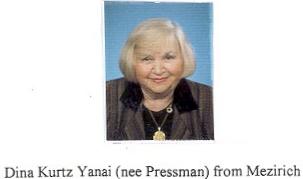
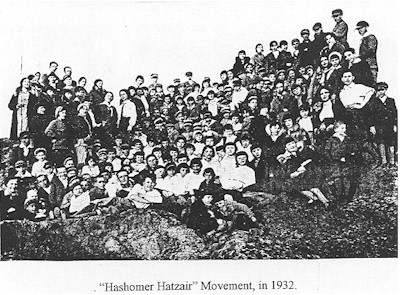
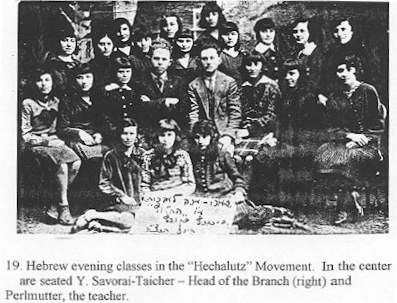
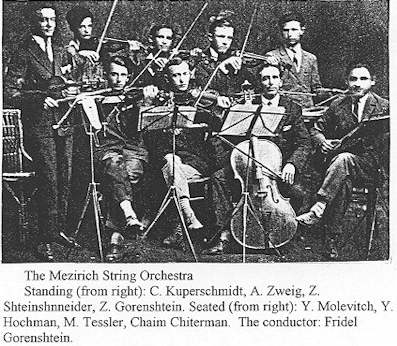
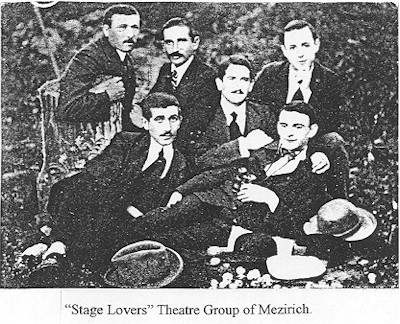





 Mezirich, Ukraine
Mezirich, Ukraine
 Yizkor Book Project
Yizkor Book Project
 JewishGen Home Page
JewishGen Home Page